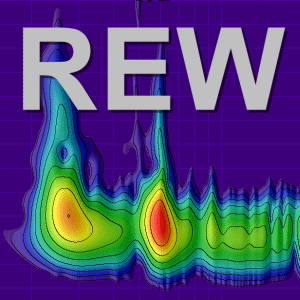Dyno
Member
Thread Starter
- Joined
- Jul 21, 2024
- Posts
- 14
More
- Streaming Equipment
- Yes
- Streaming Subscriptions
- Netfkix, Spotify
- Screen
- 65"
- Video Display Device
- LG TV
- Remote Control
- yes
- Satellite System
- no
- Other Equipment
- no
I did a little experiment that y'all might find interesting...
Background
I have a modest Yamaha/Klipsch 5.1 HT system that I've been tuning with REW. I used its generator to play random pink noise and did my best to match a house curve. My room is carpeted, but not otherwise treated. I have a CD from Sheffield Labs that has a pink noise track. I wondered how the Sheffield CD pink noise would compare to REW pink noise. I also wondered if the format (CD, streaming, laptop) would make a difference.
Procedure
Using REW, I recorded "pink noise" from four sources;
1. From the REW Generator to the receiver via cable and the Aux input
2. REW pink noise from a file on a USB stick
3. Pink noise from a Sheffield Labs CD
4. Sheffield Labs Pink noise streamed from Spotify (premium)
I left the equalizer and volume settings constant for all four recordings. I adjusted the levels in the chart manually the converge at 1000Hz.
Results

Conclusions
Background
I have a modest Yamaha/Klipsch 5.1 HT system that I've been tuning with REW. I used its generator to play random pink noise and did my best to match a house curve. My room is carpeted, but not otherwise treated. I have a CD from Sheffield Labs that has a pink noise track. I wondered how the Sheffield CD pink noise would compare to REW pink noise. I also wondered if the format (CD, streaming, laptop) would make a difference.
Procedure
Using REW, I recorded "pink noise" from four sources;
1. From the REW Generator to the receiver via cable and the Aux input
2. REW pink noise from a file on a USB stick
3. Pink noise from a Sheffield Labs CD
4. Sheffield Labs Pink noise streamed from Spotify (premium)
I left the equalizer and volume settings constant for all four recordings. I adjusted the levels in the chart manually the converge at 1000Hz.
Results
Conclusions
- Wow! I didn't expect that much spread!
- The Sheffield noise has less low-frequency content than the REW noise
- Some small difference between CD and Spotify, but probably insignificant
- The choice of pink noise source will influence tuning of an equalizer
- Choose your pink noise source to match your listening format when tuning














